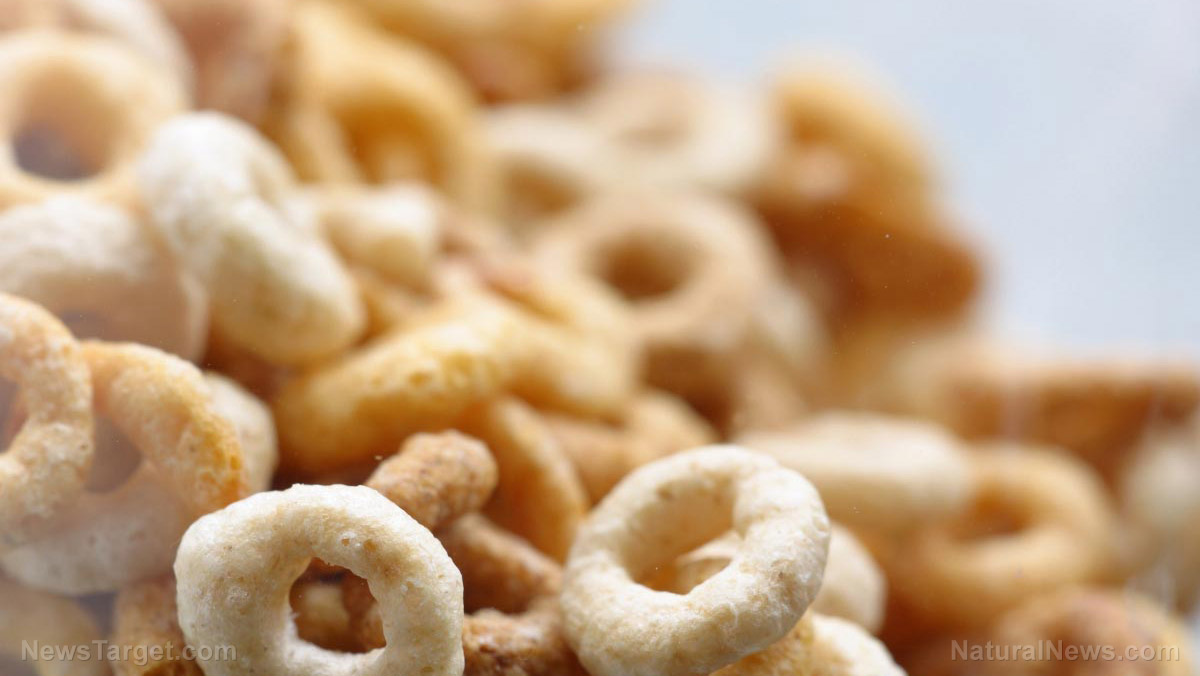CLAIM: Commercial, heavily processed almond “milk” is an unhealthy, processed junk food item (but the homemade raw version is healthy and delicious)
03/20/2023 / By Ethan Huff

As lactose intolerance and other aversions to processed milk spread, many are turning to nut “milks” such as those made from almonds, believing these to be natural, healthy alternatives to real milk – but are they?
The Sydney Morning Herald put out a report about commercial almond “milk” – we will call it almond beverage for the rest of this article because “milk” is not an accurate term to describe the stuff – that reveals some ugly truths about this processed food that is not actually healthy as many people believe it is.
In a best-case scenario, your box or carton of almond beverage has trace levels of vitamin E and perhaps some omega-3 fatty acids. At worst, you are drinking cardboard-flavored water filled with heavily processed ingredients (and very likely calcium carbonate).
(Related: Another unsavory truth about commercial almond beverage is that most of it contains only trace amounts of actual almonds – the rest is water and fillers.)
In about 98 percent of cases, the more expensive almond beverages contain strange emulsifiers and odd sweeteners, as well as a few extra nutrients such as vitamin A and D. This is a far cry from real milk drunk raw, straight from the animal, which is loaded with protein, probiotics, and other nutrients.
Almond beverage purchased at the store contains almost no protein, is “dead” (not raw) and devoid of probiotics, and is basically nutrient-free, comparatively.
If you’re going to drink almond beverage, be sure to make it yourself at home
To be clear, nutritious almond beverage can be made at home using real almonds, preferably raw and not steam “pasteurized.” These are blended with water, vanilla, dates, and a little salt to produce a nutritious drink that is both creamy and refreshing.
The boxed stuff, on the other hand, is basically slightly almond-flavored water with added chemicals. It provides very little in the way of actual nutrition, truth be told.
Contrary to popular belief, real milk is not necessarily unhealthy, unless you have a casein allergy. If you are lactose intolerant, raw milk contains lactase enzymes that break it all down – these lactase enzymes are missing from commercial milk because pasteurization destroys them.
Another thing to look out for with real milk is homogenization, a chemical process that you would do best to avoid. Real milk has a cream layer, unless it comes from goats in which case the protein molecules are so small as to remain naturally emulsified and evenly distributed throughout the liquid.
Cow’s milk, comparatively, will have a cream layer at the top – and depending on the breed, it will have a lot of cream relative to the milk portion, which is the case with Jersey milk, as one example.
Just be sure to choose varieties that are either certified organic or come from cows raised in an organic or regenerative way. Some smaller farmers will skip the official certification process in order to keep their costs lower, but still feed their cattle clean, GMO-free grains and grass.
“I made my first batch of Almond milk today,” commented one Natural News reader. “Absolutely delicious, and much cheaper and more nutritious than any shop-purchased almond milk available down under in New Zealand. No more water with almond flavour for our family.”
“Almonds are pasteurized with a fuel ppo (too toxic for even drag racers and motorcycle people to use),” warned another about how true domestic “raw” almonds no longer exist, thanks to corrupt regulators. “Unless labeled organic or steam pasteurized, don’t buy them.”
More related news about “healthy” foods that are not how they appear can be found at CensoredScience.com.
Sources for this article include:
Submit a correction >>
Tagged Under:
Almond Milk, calcium carbonate, carrageenan, Censored Science, deception, food deception, hoax, nutrition, scam, science deception, suppressed
This article may contain statements that reflect the opinion of the author
RECENT NEWS & ARTICLES
COPYRIGHT © 2017 INGREDIENTS NEWS




















